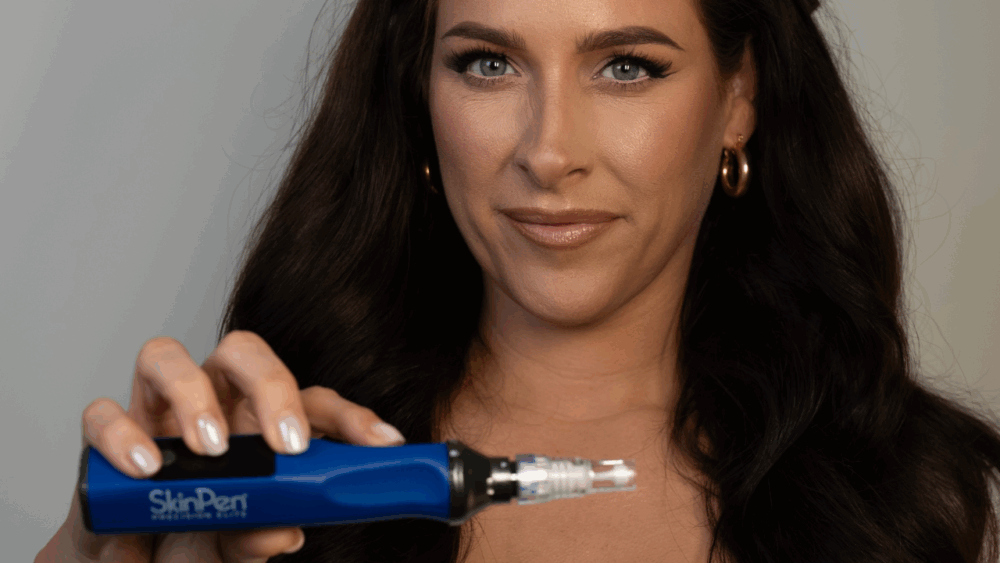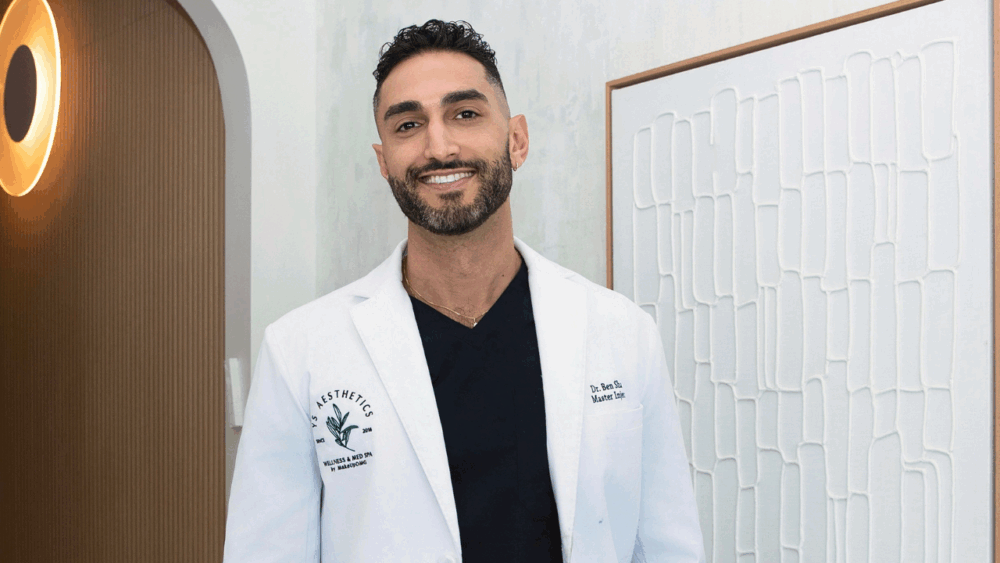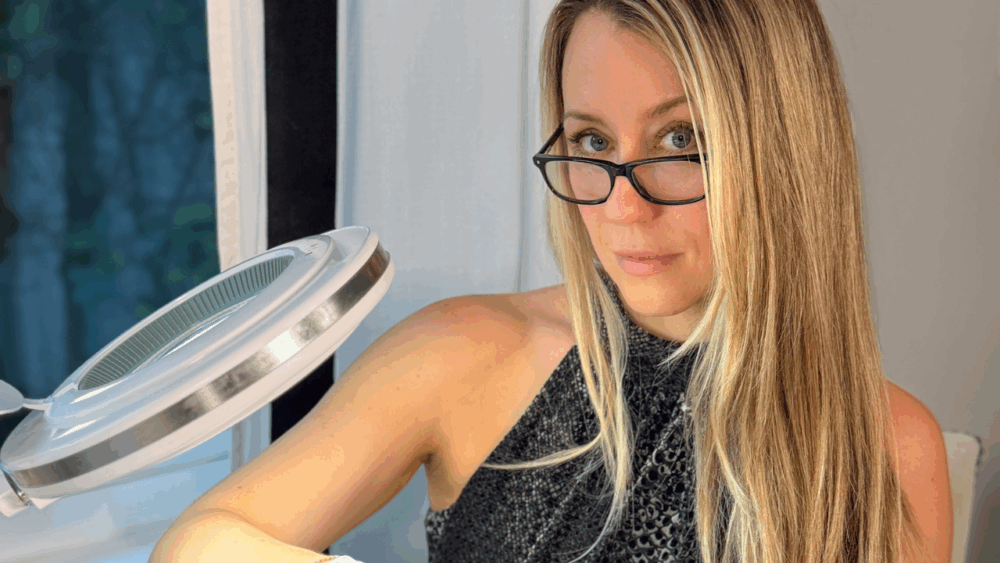The beauty world is buzzing with innovations — from slathering regenerative salmon DNA to using cold plasma gadgets and lasers that rejuvenate the skin with minimal downtime, plus new takes on classic procedures like lip filler. See what experts recommend swapping out in the search for the fountain of youth.
Love the idea of baby-smooth skin from deep ablative CO2 lasers, but hate the scary-looking peeling and long healing process? Chad Van Horn, PA-C, an NCCPA board-certified physician assistant and the owner of Icon Aesthetics & Wellness in Pompano, says traditional CO2 lasers that remove entire layers of skin are now taking a backseat to modern customizable lasers with less downtime. “The reality is that most clients aren’t willing to endure the downtime of older CO2 lasers, because you’re literally a third-degree burn victim. Your skin is peeling off your face and you have to isolate,” Van Horn says. “The recovery tends to be anywhere from four to eight weeks.” Instead, Van Horn prefers the Tetra CoolPeel, a fractional ablative carbon dioxide laser that targets the skin in columns and allows practitioners to adjust the pulse power, duration, and column spacing for customized treatments. “It gives me control as the practitioner to work with the patient’s needs,” he says, adding: “You can also dial it down to a mild setting that’s safe for all skin types, which is not true of traditional CO2.”
The CoolPeel can be used for a laser facial glow-up that reduces fine lines and wrinkles, minimizes pore size and improves skin texture, to more intense treatments that address deeper lines, acne scars or raised scars. “My two favorite areas to treat with this device are wrinkles under the eyes and those upper lip lines known as ‘smoker’s lines,’” Van Horn says.
The down time ranges from a couple of days to a few weeks for deeper treatments. Depending on the treatment intensity, patients can expect redness, mild swelling, scabbing, and dry, flaking skin, and it’s vital to stay out of the sun. “My two favorite areas to treat with this device are wrinkles under the eyes and those upper lip lines known as ‘smoker’s lines,’” Van Horn says. While results can be seen after one treatment, three to four treatments are often needed for scars and deeper wrinkles.
COST: Traditional CO2 often requires general anesthesia, so the price can range from $5,000 to $7,000. The Tetra CoolPeel costs $800 to $1400, depending on the areas treated.
Visit icon-wellness.com.

While microneedling—a cosmetic procedure that uses tiny needles to create micro-injuries on the skin to stimulate the body’s natural wound-healing response for a collagen and elastin boost—is not new, aestheticians are now adding regenerative ingredients to achieve even better anti-aging results. Courtney Smith, of Glow By Courtney Grace in Downtown Fort Lauderdale, has a devoted following for her SkinPen microneedling treatments, which she is now elevating with salmon DNA or brightening exosomes. “Using these in conjunction with the SkinPen supercharges the results,” Smith says.
The aesthetician slathers on a product from Toskani that contains a key component of salmon sperm DNA during or right after a microneedling treatment—which allows the active ingredients to penetrate deeper and max its rejuvenating effects. “The salmon DNA molecules help repair damaged skin, improve hydration, boost elasticity and stimulate collagen production,” Smith says. “I use this on the face, neck, décolleté, under the eyes or hands, in a series of three to four sessions, spaced about three to four weeks apart.”
She also uses AnteAGE exosomes, which are rich in growth factors derived from human stem cells, to amplify elastin and collagen production too. “Exosomes are tiny packages filled with regenerative instructions,” Smith says. “I describe them as text messages sent from one cell to another, telling them how to heal, regenerate and how to heal better.” She notes that when paired with microneedling—which often causes a red, sunburn-type effect—the exosomes can cut down on inflammation and redness by 50 percent. “You’re going to have one to two days of dryness, and in a week you’re totally healed and glowing.” Visit glowbycourtneygrace.com.
COST: SkinPen treatment costs around $350; adding salmon DNA tacks on an extra $150, and $250 extra for exosomes.

Overfilled and protruding “duck lips” be gone. The future of lip filler is all about facial harmony. Dr. Ben Shatil, a board-certified anesthesiologist and master cosmetic injector at YS Aesthetics in Dania Beach, has famously developed his own signature lip technique for the perfectly plump pout—so unique, he’s currently patenting it. The trick: Every patient that comes in receives an initial facial balancing assessment. “Someone who comes in for lips but has a recessed chin or a nose that hooks down, to get the results they want, I tell them we should also address the chin and curvature of the nose,” Shatil says. “So overall, the profile view looks more balanced and more aesthetically pleasing.”
While we can’t give away all of his secrets, part of his hallmark lip-filling technique involves numerous injections. “I probably do 30 to 50 injection points throughout the lip procedure, while most traditionally do four to six injection points,” Shatil reveals. “It’s a micro-bolstering technique where I’m putting small amounts of filler in anatomically correct areas and enhancing someone’s natural lip shape while correcting any asymmetry. The final result gives a very flat-side profile to the lips instead of the protruding ‘duck lips’, while still giving height.”
After the initial treatments—where he uses only one syringe at a time to build up to flawless lips— Shatil also has a policy that patients can only get their lips injected once a year. “If you put in too much filler in a short amount of time,” he says, “the filler starts to leave the borders of the lips, and you get migration or puffy lips.” Visit ysaesthetics.com.
COST: Lips cost a flat rate of $900, facial balancing runs $2,500 to $3,000.

When it comes to tightening the skin without surgery, forego often painful procedures like ultherapy or even radio frequency—which some studies show could cause fat loss—for painless cold plasma treatments. “We don’t want to flush the fat, we want to restore the cells, and that’s what cold plasma does,” says Rachel Levy, a master trainer, practitioner, and distributor of cold plasma in Miami. “Cold plasma shortens the fibers of collagen and elastin and is actually a healing energy. As we age, our skin is breaking down, and this gives the mitochondria the building blocks to restore itself.”
Levy utilizes both Jet Plasma technology, a handheld device she can use on the face or anywhere on the body that creates a plasma field to deliver energy into the skin; and the NuVissa Plasma Pen, with its plasma current modality utilizing stainless-steel probes to deliver plasma energy into the skin to stimulate collagen, elastin and remodel the skin. “Both tighten and shrink the skin. Think of it as shrink-wrapping the skin to hug the face like it did before,” she says, adding that the benefits of cold plasma go much further than tightening. “It’s actually changing the appearance of the skin, because the healthier cell is not going to have the same amount of skin discoloration or pigmentation.”
Both treatments are painless and there is no downtime. “You might have a little warmth or a tingly feeling, which actually feels kind of good,” she says of the 30-minute to one-hour sessions. For a mini-facelift effect, six to 10 sessions are recommended, and Levy says that results improve over six weeks and last until you age out of them.
@rachellevyskin
COST: $400 – $600 a session.
The post Do This, Not That. appeared first on Lifestyle Media Group.
lmgfl.com (Article Sourced Website)
